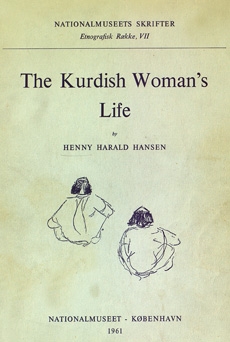Contents
Preface / VII
Note on Transcription / XI
Introduction / 1
Chapter I / 5
Field of investigation: the Kurds viewed historically; statements concerning the Kurdish woman; demonstration of four separate female environments in the material investigated; the village scene.
Chapter II / 21
Material surroundings; Forms of dwelling; the leaf hut; the permanent house and its construction. The function of the dwelling; the environment of the woman of the village aristocracy; furnishing; sleeping habits; hygiene; lighting; the environment of the ordinary village woman; the environment of the educated and of the uneducated urban woman. Woman's activities in the home; baking of bread; treatment of milk, making of tea, cooking; fetching water, fuel supply, heating, washing up, laundring, cleaning, bed making, working postures; household activities in relation to the four female environments. Domestic industry; spinning; weaving; production of clay vessels.
Chapter III / 65
Appearance: Women's dress. Kurdish elements. Elements connected with Islam. Loans from Western culture. Distribution of the woman's dress within the four female environments. The "Kurdish elements" of women's dress viewed in a larger context. Elements of women's dress and their distribution. The production of female garments. Jewellery. Beauty culture. Men's dress. Kurdish elements. Men's dress of Sulaimani type. Men's dress of Rowanduz type. Footwear and headdress. Foreign elements of the men's dress. Accessories. Children's dress.
Chapter IV / 99
Life cycle: Birth; cradle types; analysis of cradle types; nursing; circumcision; naming; analysis of the child's status; schooling.
Marriage: choice of spouse; kinship terms; marriage possibilities; difference in position of man and woman on entering matrimony; marriage policy and negotiations; the marriage contract; social conventions of engagements; the bride-price, its employment and sociological significance; marriage preparations; the wedding; the importance of virginity; polygyny and divorce.
Death: hospitals and medical attention; health conditions; burial; washing of the dead; cerements; mourning period.
Chapter V / 145
Woman's place in the religous life of Islam. The five pillars: confession of faith; the dayly prayers; obligation to give alms; fasting; pilgrimage; domestic parallels to the days of pilgrimage; condition of uncleanliness; Sufism; superstition and magic; amulets; holy hand; visit to saints' tombs; prophecy; rag trees and rag poles; animal sacrifices.
Conclusion / 163
Woman's position in the community: analysis of veil types; woman's possibility of movement and seclusion; distribution of authority between man and woman; common domestic life; man's position in the house; analysis of the social structure of the Kurdish woman's cultural pattern in the light of the coming "emancipation"; difficulties in connexion with abolition of the veil in other Islamic areas; the wish for emancipation comes from the man; the marital position of the Kurdish woman; the structure of the home; the difference between the basis on which the emancipation of European women began and that existing in Muslim areas.
Notes / 187
Bibliography / 198
List of Kurdish terms employed. Normalized by Professor K. Barr / 205
List of ethnographical specimens / 209
List of illustrations / 211
| 